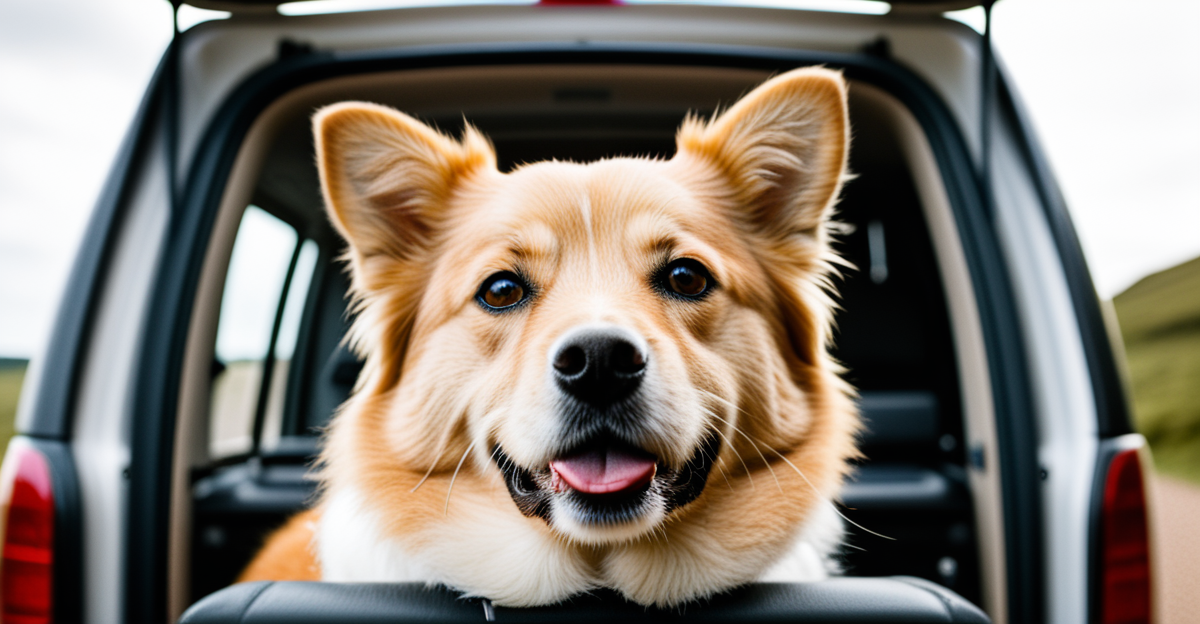Essential Guidelines for Pet Safety During Holiday Travel
Traveling with your pet requires careful attention to pet travel safety UK standards to ensure their health and comfort. Pre-trip planning is crucial. Start by assessing your pet’s temperament and health to determine the best travel approach. Consider potential stressors and prepare accordingly.
In the UK, different travel modes present unique challenges. For car trips, secure your pet with a harness or a suitably sized carrier to prevent injury during sudden stops. Ensure good ventilation and schedule regular breaks for hydration and exercise. Train travel allows pets on specific routes but usually requires booking in advance and adherence to size restrictions. Air travel demands thorough preparation, including compliance with airline pet policies and obtaining necessary health certificates.
In parallel : What Are the Most Common Behavioral Issues in UK Pets?
A comprehensive holiday pet travel guide advises pet owners to pack essentials such as familiar bedding, favorite toys, and portable water bowls to keep pets comfortable throughout the journey. Monitor your pet closely for signs of distress or overheating, especially during warmer months, and maintain a calm demeanor to reassure them.
By following these travel tips for pets, owners can better navigate the complexities of holiday travel with animals, ensuring safety and wellbeing during every phase of the trip.
In the same genre : What are the best practices for training pets in the UK?
Essential Guidelines for Pet Safety During Holiday Travel
Ensuring pet travel safety UK starts with thorough pre-trip planning. Understanding the unique needs of your pet is vital. Different travel modes—car, train, and plane—each present distinct challenges. For instance, car travel requires secure restraints or carriers to protect pets in motion and ensure safety during rest stops. Proper ventilation and maintaining a comfortable temperature are critical to prevent overheating or distress.
When traveling by train, familiarize yourself with pet policies and ensure your pet is comfortable in a well-ventilated carrier. On airplanes, strict regulations often apply, including crate requirements that meet airline safety standards to minimize stress and injury risks.
Another key for holiday pet travel guide is to acclimate pets to carriers well before travel dates. This familiarity helps reduce anxiety during journeys of varying length. Additionally, avoiding feeding your pet immediately before travel can mitigate motion sickness.
Remember, every journey is different, and being proactive means prioritizing your pet’s physical and emotional wellbeing. Observing pets closely during travel allows for timely interventions when discomfort or stress is detected. These steps represent essential travel tips for pets that promote a safe, smooth experience for everyone involved.
Legal Requirements and Travel Laws for Pets in the UK
Understanding UK travel laws pets is crucial for hassle-free journeys. The UK enforces strict pet transport regulations to safeguard animal welfare. Before travelling, owners must ensure all documentation is up to date. This includes a valid pet passport or official health certificate, proof of rabies vaccination, and parasite treatments administered within specified timeframes. Meeting these legal criteria helps prevent quarantine or denied boarding.
What documentation is required for pet travel in the UK? The primary paperwork is a pet passport or a third-country official veterinary certificate, demonstrating identification, vaccination status, and recent treatments. For air travel, airlines may request additional forms and compliance with International Air Transport Association (IATA) rules. Failure to provide correct documents can result in fines and travel delays.
Public transport rules require pets to be safely restrained or contained in carriers. On trains, pets often travel free or at a reduced fare but must not inconvenience other passengers. Airlines may impose size restrictions on approved carriers and limit the number of animals onboard. Checking the specific regulations of carriers ahead of booking supports smoother travel experiences.
Adhering strictly to pet travel paperwork and pet transport regulations avoids legal complications, ensuring your trip aligns with UK standards and your pet’s welfare remains a priority.
Legal Requirements and Travel Laws for Pets in the UK
Understanding UK travel laws pets is vital for safe and compliant journeys. Pet owners must adhere to specific pet transport regulations, which include having up-to-date vaccinations—especially against rabies—and obtaining a valid pet passport or health certificate. These documents confirm your pet’s identity and health status, fulfilling legal requirements for crossing borders within and outside the UK.
For domestic travel, rules for pets on trains often specify size limits and that animals must be kept in suitable carriers or on a lead. Public transport may require booking in advance to ensure space for your pet, reflecting practical pet travel safety UK considerations.
Airline travel imposes stricter regulations. Pet carriers must meet International Air Transport Association (IATA) standards, ensuring adequate ventilation and space. Airlines also demand pre-travel paperwork completed well ahead of departure, including veterinary certificates outlining vaccinations and overall fitness for flight.
In short, successful compliance with pet travel paperwork involves preparing veterinary records, microchip information, and documenting preventive treatments. Staying informed about current UK travel laws pets reduces complications, helping owners focus on comfort and safety rather than legal hurdles. Following these regulations is an essential part of any reliable holiday pet travel guide.
Essential Guidelines for Pet Safety During Holiday Travel
Ensuring pet travel safety UK begins with meticulous pre-trip planning. Identifying your pet’s individual needs and comfort levels helps tailor the journey to reduce stress and potential health risks. A holiday pet travel guide stresses that preparation involves more than just packing; it requires familiarising pets with travel equipment like carriers or harnesses to foster calmness.
Travel modes in the UK—car, train, and plane—demand specific precautions. For car journeys, securing pets with approved restraints or carriers prevents injury. Adequate ventilation and scheduled breaks for exercise and hydration are pivotal travel tips for pets to avoid overheating and discomfort. Train travel permits pets in carriers, but early booking and adherence to carrier size rules are essential. Airline travel imposes strict requirements, including crate standards and health documentation, to uphold pet travel safety UK.
During travel, owners should monitor their pets for signs of anxiety or distress. Offering familiar bedding and toys provides reassurance, in line with advice from a comprehensive holiday pet travel guide. Feeding should be timed to reduce motion sickness, and a calm demeanour from the owner helps maintain pet wellbeing.
In summary, prioritising thoughtful planning and attentive care ensures that travel is safe, comfortable, and enjoyable for pets across varied UK travel scenarios.
Essential Guidelines for Pet Safety During Holiday Travel
Taking care of pet travel safety UK means addressing the distinct needs of pets in various travel scenarios. Pre-trip planning forms the foundation of a safe journey. It starts with assessing your pet’s health, temperament, and travel experience to choose suitable modes like car, train, or plane. Each carries specific challenges requiring tailored precautions.
In car travel, securing pets with harnesses or size-appropriate carriers is vital. This prevents injury during abrupt stops or turns. Good ventilation and regular breaks are non-negotiable travel tips for pets, ensuring hydration and reducing stress.
Train journeys often require pets to remain in carriers or on leads while respecting other passengers’ comfort. Always verify transport provider rules before booking. Air travel demands adherence to strict regulations on carrier standards and pre-travel veterinary checks, minimizing risks during flights.
An effective holiday pet travel guide also recommends familiarizing pets with carriers weeks before departure. This acclimation reduces anxiety significantly. Avoid feeding immediately prior to travel to lessen motion sickness chances. Monitoring your pet throughout travel helps catch distress early, allowing timely intervention.
Following these guidelines blends physical safety with emotional wellbeing, making every phase of holiday travel safer and more enjoyable for pets and owners alike.
Essential Guidelines for Pet Safety During Holiday Travel
Traveling with pets in the UK demands focused attention on pet travel safety UK to ensure health and comfort. Pre-trip planning is paramount. Start by assessing your pet’s temperament, medical history, and reactions to past travel. This foundation allows you to anticipate stressors and cater to specific needs.
Different travel modes require tailored approaches. In cars, always use a well-fitted harness or sturdy carrier to prevent injury during sudden stops. Good ventilation and scheduled breaks for water and exercise are among the most effective travel tips for pets. For train journeys, verify pet policies since carriers must fit size restrictions and booking may be needed. Air travel is the most complex: strict crate standards, airline approvals, and up-to-date veterinary paperwork that match a thorough holiday pet travel guide are necessary to comply with regulations and safeguard pets.
Familiarising your pet with carriers and travel conditions well in advance significantly reduces anxiety. Monitor behavioural changes closely during transit to intervene promptly. Feeding timing, comfort items, and maintaining calm owner demeanour serve as practical, impactful strategies. Emphasizing these detailed travel tips for pets helps promote a safe, stress-minimised travel experience in all UK settings.
Essential Guidelines for Pet Safety During Holiday Travel
Ensuring pet travel safety UK requires recognizing key safety concerns unique to pets during holiday trips. Pre-trip planning is indispensable. Assess your pet’s health, temperament, and travel experience comprehensively. This evaluation guides decisions on suitable modes such as car, train, or airplane, each with specific safety considerations.
In UK-specific travel scenarios, car travel demands secure harnesses or size-appropriate carriers to protect pets from injury during sudden movements. Maintaining ventilation and scheduling regular breaks for hydration and exercise are critical travel tips for pets to prevent overheating and stress.
Train travel in the UK typically requires pets to be transported in carriers or on leads and sometimes booking in advance. Owners must ensure carriers meet size rules and avoid disturbance to other passengers, complying with regional travel protocols.
Air travel enforces strict rules including adherence to crate standards aligning with International Air Transport Association regulations. Pre-travel veterinary checks and proper documentation form essential components of the holiday pet travel guide. Familiarizing pets with carriers prior to departure reduces anxiety and enhances wellbeing throughout the journey.
By focusing specifically on these pet travel safety UK factors tailored to travel mode, owners can provide a safer, more comfortable experience for their pets during holiday travel.
Essential Guidelines for Pet Safety During Holiday Travel
Ensuring pet travel safety UK revolves around meticulous pre-trip planning to safeguard your pet’s wellbeing throughout diverse travel modes. Understanding the specific challenges of car, train, and plane travel is fundamental. In car journeys, securely restrain pets using harnesses or appropriately sized carriers, as this prevents injuries during sudden stops. Good ventilation and planned breaks to hydrate and exercise your pet are critical travel tips for pets to avoid overheating and distress.
For train travel, adherence to carrier size restrictions and early booking is vital to comply with policies and ensure comfort. Familiarity with the pet’s carrier before travel, as recommended in a thorough holiday pet travel guide, helps reduce anxiety. Airline travel entails the most regulations: compliance with crate standards set by airlines, advance veterinary paperwork, and proper acclimation to carriers significantly mitigate stress and safety risks.
Additional travel tips for pets include timing meals to reduce motion sickness and bringing familiar items like bedding or toys to comfort pets. Observing your pet during travel to detect signs of anxiety or distress enables timely intervention. Prioritizing these strategies promotes a safer, calmer journey aligned with best practices in pet travel safety UK.
Essential Guidelines for Pet Safety During Holiday Travel
Ensuring pet travel safety UK fundamentally depends on detailed pre-trip planning tailored to your pet’s needs. This involves assessing health, temperament, and prior travel experience to minimize stress and physical risks. Each travel mode in the UK—car, train, and airplane—entails specific challenges requiring careful preparation as highlighted in a thorough holiday pet travel guide.
In car travel, securing pets with harnesses or appropriately sized carriers is essential to protect them against sudden stops or impacts. Plus, maintaining fresh airflow and scheduling frequent breaks for hydration and exercise are crucial travel tips for pets to avoid overheating or stress.
Train travel usually mandates smaller carriers or leashes and may require booking in advance. Pay attention to size limits and etiquette to reduce disruption to fellow passengers, ensuring compliance with UK transport rules. For air travel, strict crate requirements aligned with International Air Transport Association standards are enforced. Proper veterinary certificates and updated vaccinations are mandatory, serving as fundamental components of an effective holiday pet travel guide.
Moreover, allowing pets to acclimate to their carriers well before departure reduces anxiety notably. Owners should remain observant for signs of distress during travel to act swiftly, combining physical safety with emotional wellbeing for a truly safe journey.
Essential Guidelines for Pet Safety During Holiday Travel
Ensuring pet travel safety UK hinges on comprehensive pre-trip planning tailored to your pet’s health and temperament. Before setting off, evaluate your pet’s suitability for travel to select the safest mode—car, train, or plane—each with unique challenges. This consideration is the foundation of an effective holiday pet travel guide.
In car travel, use secure harnesses or carriers sized appropriately to prevent injury from sudden stops. Provide good ventilation and schedule frequent breaks, incorporating these into your travel tips for pets to maintain hydration and reduce stress. Familiarity with the travel environment by acclimating pets to carriers beforehand is crucial.
Train journeys adhere to strict size restrictions for carriers, requiring early booking and compliance with provider policies. Ensuring your pet remains calm in these confined spaces helps prevent anxiety or discomfort.
Air travel presents the most stringent requirements: carriers must comply with International Air Transport Association standards, accompanied by up-to-date veterinary paperwork. Introducing pets gradually to carriers as advised in a holiday pet travel guide mitigates travel anxiety significantly. Practical travel tips for pets also include avoiding feeding just before departure to minimize motion sickness.
Prioritising these tailored strategies assures safer, more comfortable experiences in all UK travel scenarios, marking responsible care in pet travel safety UK.










